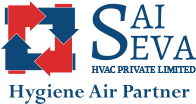
What are ISO Class in cleanrooms?
The essential expert on cleanroom classification norms is the International Organization for Standardization (ISO), which is the worldwide portrayal of public standard bodies. The ISO is a non-legislative gathering with its central command in Geneva.
ISO suggests that its member countries provide equivalent portrayal and is composed of in excess of 160 nations, with each addressed by its standard body.
ISO And Cleanrooms
We clean rooms to meet neatness order levels, subject to the business being referred to. It’s critical to match industry type to a particular cleanroom model. This is on the grounds that various businesses work with various degrees of air efficiency.
Assembling and collecting electronic parts inside the electronic business relies basically upon cleanrooms. Biotech and Pharmaceutical organizations work with ISO Class 5 to ISO Class 8 to keep away from particulate defilement. Clinical organizations work with ISO Class 7 and ISO Class 8 to stay away from surface defilement. Food businesses eventually rely upon secure cleanroom conditions for sanitation.
Cleanroom industry necessities fall under ISO 14644-5:2004 – an ISO classification that rundowns the essential prerequisites for cleanroom activities.
Cleanroom Industry Requirements and Classifications
The number and size of particles allowed per volume of air in a particular measure of time groups cleanroom necessities and principles. Our professionals can give rules and ISO class code portrayals for the class of cleanroom expected for your particular application. Normally, organizations and associations know about their cleanroom execution prerequisites on account of client, industry or government details. For instance, unofficial law USP 797 layouts explicit prerequisites for drug item producing.
Modular cleanroom industry prerequisites are arranged by ISO 14644-1 cleanroom principles, which indicates fundamental necessities for cleanroom activities.
The amount of particulate of a particular size that exists for every cubic meter, inside a given nook is evaluated to ISO cleanroom orders (see second graph). Cleanroom arrangements depend on an eight class rating cleanroom standards, with an ISO class 1 cleanroom being evaluated the most molecule free and ISO class 8 permitting the most particles. This cleanroom standard rating framework gives the essential data to go with an educated choice in view of your item needs. Most spotless rooms fall into the 6,7, or 8 classes.
ALSO READ THIS AMAZING BLOG:
The most effective method to Determine A Cleanroom Classification
The degree of air neatness determines the arrangement of cleanrooms. Cleanroom classes cover the scope of ISO 1 to IOS 9. An ISO 1 is the cleanest, though an ISO 9 is the dirtiest status for cleanroom guidelines. This is what we mean when people ask, “what is ISO class cleanroom?”
Investigation shows there are around 500,000 to 1 million particles for each cubic feet of air. To gauge impurities found in the cleanroom, the standard conveyed is a micron or micrometer (μm) Micron estimation addresses the cleanroom standard size for pollutants. A micron is identical to one-millionth of a meter. A micron is more modest than a living cell and must be seen by a strong magnifying lens. A residue molecule is around 60 microns, while the size of a bacterium is approximately 2 to 10 microns.
Cleanrooms are classified according to the size and amount of foreign substances per unit volume of air. Each cleanroom has a specified limit for impurities; ISO orders are expressed in cubic meters (m3) of air. There are three models deciding cleanroom order:
- The size of molecules to be sifted from the cleanroom
- Wellspring of pollution inside the cleanroom
- Measure of air expected to circle the foreign substance out of the cleanroom
What is the difference between ISO 7 and ISO 8?
The two principal contrasts between ISO 7 and ISO 8 cleanrooms are molecule count and ACH necessities, which put them aside for varying applications. An ISO 7 cleanroom should have 352,000 particles ≥ 0.5 microns per cubic meter and 60 ACH each hour instead of ISO 8’s 3,520,000 particles and 20 ACH.
When is a cleanroom required?
Various ventures and applications can utilize a cleanroom. Sterility and neatness are vital for these spaces. For setting, an ISO 8 cleanroom is normally 5-10 times cleaner than a run of the mill office climate. Unrefined components producing processes and completed products can be impacted by too many particles entering the space. It is extremely critical in clinical gadget and drug fabricating cleanrooms where the wellbeing and nature of items is important.
